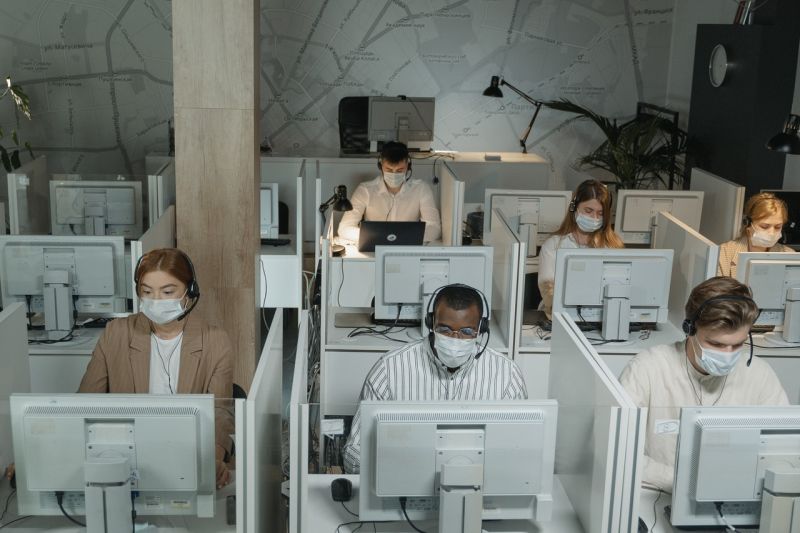Employee Benefits Trends for 2021
Last Updated on November 11, 2022 by VantagePoint
2020 has been a challenging year for both employees and employers. Many employers have moved towards a more mobile workforce, where possible. Other companies have been required to adapt to new and changing guidelines on how to stay safe in the workplace.
And there have been countless people who have also been affected by mass furloughs and layoffs. Looking towards the future, this year has shaped the benefits that employees value, such as health benefits and sick leave. Discover the latest employee benefits trends and other useful information.
How the Pandemic Impacted Employee Benefits
Premium increases have been the norm over the last several years. However, due to the pandemic, as routine health care was deferred, employees used fewer benefits, on average, in 2020. This has resulted in many insurance carriers returning a portion of the premiums paid or offering employers a premium holiday in cases where the carriers did not meet the medical loss ratio that was required by the Affordable Care Act.
While premiums have increased for the 2021 plan year, these increases tended to be smaller than in past years. It is important for employees to understand their benefits and how to use them. Employers should make the effort to educate employees on what is offered or risk losing employees to companies that are able to communicate what they offer.
The uncertainty of 2020 has highlighted the importance of financial wellness and flexibility, even if employees can’t verbalize that these characteristics are important to them. While money is important, this year has shown employees that stability and consistency are also important. For 2021 and beyond, employers should take this into consideration as they evaluate their benefits packages.
Healthcare Benefits Trends and Health Plans
2020 saw a reduction in plan usage as people put off their routine health care even as the cost to cover COVID has increased. However, it is expected that these short-term savings will disappear once people feel comfortable in public, especially as a vaccine is on the horizon for those who want it. Health plans will need to take this into account for 2021 and beyond.
The Society for Human Resource Management reports that benefits packages are changing to accommodate the new reality. The most common changes include expanding virtual and telehealth programs, enhancing mental health support (such as through an employee assistance program), and expanding voluntary benefits. Employers are also looking at cost-sharing for plan expenses, such as deductibles and co-pays.

Employee Benefits Trends: Financial Wellness Benefits
Financial wellness is often lower on the priority list of employee benefits when compared to health benefits or paid leave. Employee insurance such as short- and long-term disability or critical illness benefits is often seen as a cost to employees, particularly younger employees. 2020 has highlighted the need for people to take their financial wellness seriously.
Employers should highlight the financial wellness benefits that employees can take advantage of, whether that is paid time off in the event that an employee gets sick or access to financial planning resources through an employee assistance program.
Mental Health Benefits
Disruption to daily life and anxiety around the virus has taken a toll on the mental health of many. Some worry about their exposure when in public, while those who are working from home feel isolated and may face family pressure as they share workspaces with their partners and/or children.
An employee assistance program can help connect employees with resources for a variety of issues that weigh on them – from counselors to financial planners. Wellness benefits can also help employees maintain their mental health. While gyms might be closed in some areas, offering online wellness benefits or workout subscriptions are becoming more popular options.
Flexible Work Benefits and Why They Matter
Not all jobs allow flexibility to when and where people work, but where it is possible, employees are looking for added flexibility. Netflix CEO Reed Hastings has publicly announced that he will bring employees back to the office once vaccines are available. While the conditions under which remote work came about has led to stress and feelings of isolation, employees have enjoyed some aspects of working from home.
There are benefits to remote work and employees are expected to continue to value this benefit, at least part of the time. Flexible hours is another perk that employees have valued, especially those who might have childcare responsibilities as kids are also at home doing remote school. This may be a favored option to add to an employee benefits package that will not increase costs in the future.

Important Leave Benefits
SMBs may be eligible for tax credits for employees who took leave under the Families First Coronavirus Response Act (FFCRA), which covers family leave and retention leave for specified circumstances. The FFCRA applies to companies with fewer than 500 employees.
While some states and cities require paid sick leave, this year has shown many employees the importance of paid leave if it is not available to them. The sick leave portion of the FFCRA was intended to help employees in small businesses, which might not have paid sick leave.
Payroll Taxes & Unemployment Insurance
Starting January 1, 2021, the payroll cap on earnings subject to Social Security tax will increase from $137,700 to $142,800. Employees and employers each pay 6.2% of earnings to cover this tax, so high earners will see an increase in payments.
Employers who deferred their payroll taxes under the CARES Act will need to pay half of their outstanding tax balance by the end of 2021 and the remainder by the end of 2022. If employers allowed employees to defer their portion of FICA between September and December 2020, they should communicate to employees how this will be collected starting in January.
Unemployment insurance has been extended to cover longer periods of unemployment as companies face challenges with the pandemic. In December 2020, the federal government is negotiating an extension to the additional payments that were used to help people cover expenses. It is expected that unemployment will continue to climb in Q1 2021.
Workers’ compensation is expected to stay steady or fall in 2021 as the industry saw lower claims in 2020. However, like health insurance, it is expected that claims will stabilize as workers return to the workplace.
Other Benefits Perks for 2021
Some companies are moving away from office perks like snacks and team lunches. Instead, they are offering employees stipends or expense reimbursement for qualified expenses. Some companies offer reimbursement for setting up a home office or a snack budget to cover what would have been offered in the office.
Overall, there were no significant changes to benefits in 2020, but as we look towards the future employee will continue to value flexibility and financial stability in a benefits package to help them balance work and home life.
If you need guidance or expert advice, as an employer or an employee, get in touch with our team!


